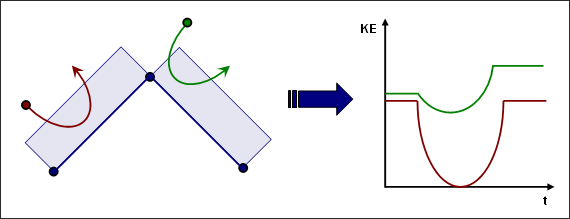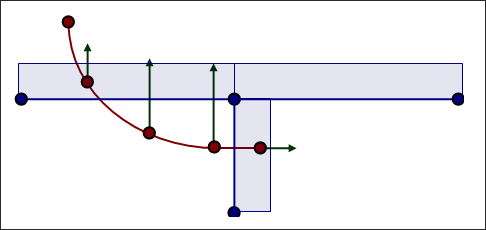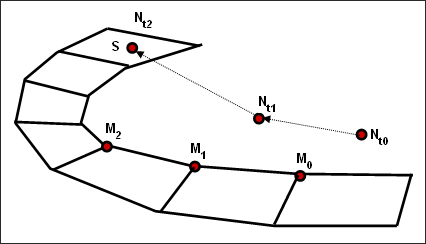Common Problems in Interfaces Type 3 and 5 |

|

|

|

|
|
Common Problems in Interfaces Type 3 and 5 |

|

|

|

|
Interfaces types 3 and 5 have some common problems.
| • | Energy jumps |
| • | Bad contact treatment |
| • | Limited search algorithm |
The gap used in interface type 5 (and type 3) is one sided and does not take into account the edges. This can lead to energy jumps in cases of a large gap (Fig. 5.6).

Fig. 5.6: Jump in energy
Moreover, as the interface stiffness is constant, node penetration is allowed. This point can lead to a huge error, especially if sliding occurs during the penetration. The following example illustrates how slave nodes are allowed to go through the shell mid-surface because of bad contact treatment.

Fig. 5.7: Bad contact treatment
With interface type 5 (and type 3), the detection of the closest master node is limited to the segments topologically close to the previous one (topologically limited search algorithm). The first search is done by RADIOSS Starter to determine the closest initial master node, then the Engine determines the closest master node, taking into account only the segments topologically close to the previous one. This method is rather slow in CPU time, and it does not work very well, especially if high curvatures are involved (Fig. 5.8).

Fig. 5.8: Bad detection of the closest master segment